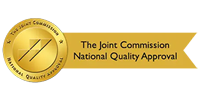Adolescence, the period between ages 13 and 19, is denoted by significant physiological development and a period of increased vulnerability for the onset of mental health issues, according to research.
Mental illness is hypernym that encompasses distinct diagnosable mental health ailments, disorders, diseases, and conditions, that involve changes in emotion, thinking and/ or behavior.
The Mayo Clinic explains that mental health disorders in young people are “generally defined as delays or disruptions in developing age-appropriate thinking, behaviors, social skills or regulation of emotions. These problems are distressing to children and disrupt their ability to function well at home, in school or in other social situations.” While each mental disorder has its own distinct characteristics, symptoms, and treatment protocols, there are hidden links between many of these conditions, which is clearly emphasized by a young person’s increased propensity for co-existing conditions.
The term dual diagnosis is used when referring to an individual diagnosed with any combination of physical conditions occurring simultaneously in the same person (e.g., high blood pressure and heart disease, cancer and diabetes, substance use disorder and generalized anxiety disorder, etc.). The following exemplify some of the hidden links between mental disorders in adolescents:
- Anxiety and depression: Empirical evidence has concluded that “anxiety and depression frequently co-occur both concurrently and sequentially in children and adolescents, and one often increases the risk of the other over time.” However, according to findings from one study, youth with primary depressive disorders (25% to 50%) tend to have comorbid anxiety more often than do those with primary anxiety disorders have comorbid depression (10% to 15%).
- Substance abuse and eating disorders: In a very broad sense, eating disorders are characterized by severe disturbances in people’s eating behaviors and related thoughts and emotions. The three most common types of eating disorders include anorexia nervosa, bulimia nervosa, and binge eating disorder (BED). Studies show young people who abuse drugs and/ or alcohol are up to 11 times more likely to have eating disorders.
- Attention-deficit/ hyperactivity disorder (ADHD) and oppositional defiant disorder (ODD): The Center for Disease Control and Prevention (CDC) describes ADHD as an inability to control impulsive behaviors, difficulty focusing and/ or paying attention, and/ or being overly active. Oppositional defiant disorder is a behavioral condition that involves a combination of emotional dysregulation and interactional/ social conflict. Approximately 40% of children with ADHD also have oppositional defiant disorder.
The New York Times notes that early identification and intervention play a key role in treatment outcome and long-term recovery.
Further Information and Support
For most of us, life can be very stressful, leading us to feel emotionally charged, which can cause anxiety, panic attacks, depression, and getting stuck in a cycle of being burdened with negative thoughts. Navigating through the challenges and emotional turmoil of life can be overwhelming, but you do not have to go through it alone. Engage Treatment is a Joint Commission Accredited professional psychological practice. We specialize in treating children, teens, and young adults struggling with depression and anxiety through community-focused treatment plans that incorporate a carefully selected combination of therapeutic interventions. Our compassionate, multidisciplinary practitioners are devoted to providing the highest quality of care that helps ignite positive change and enables clients to reach optimal health and well-being. Please do not hesitate to reach out for guidance. We are happy to answer questions and provide you with any additional information. Feel free to call us at 805-497-0605 or email us at [email protected]. You are also welcomed to get in touch by filling out our contact form. We look forward to connecting and having the opportunity to discuss how we might best be able to support you.
Contact Us
Westlake Campus:
IOP Program
2625 Townsgate Road, Suite 210
Westlake Village, California 91361
Agoura Campus:
Private Therapy & Parenting Program
30300 Agoura Road, Suite 250
Agoura Hills, CA 91301
805-497-0605
805-371-4862











© 2023 Engage Treatment Program, Inc. All Rights Reserved.
LGBTQ Friendly
About
• About Engage
• Our Team
• Career Opportunities
• Individual / Family Therapy






